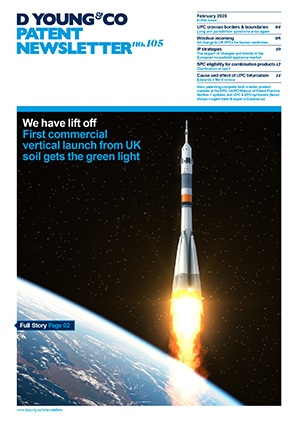Battery technology: patent filings and future development areas
Batteries have the potential to contribute significantly to a greener and more sustainable future, and so are a critical sector in the drive to net zero. What do the latest patent statistics reveal about innovation in the battery power sector? What are the key areas suitable for patent protection? In this article we explore the newest patent trends and gain valuable insights into this rapidly evolving field.
Growth in the sector
The EPO’s Patent Index 2023 highlights that the field of electrical machinery, apparatus and energy, which includes clean energy inventions, was the fastest growing technology field with new European applications. 2023 applications increased by 12.2% in comparison to 2022, including both direct European applications and international (Patent Cooperation Treaty) applications which entered the European phase.
Furthermore, as of 10 June 2024, the percentage of granted patents in the field of electrical machinery, apparatus and energy for which a unitary patent has also been requested has increased to 20.1% in 2024 from 14.0% in 2023, potentially demonstrating the increasing confidence in the Unified Patent Court (UPC) system, as well as the importance of this field.
The Y02E 60/10 international patent classification (IPC) is a specific technology classification indicating climate change mitigation technologies relating to energy storage using batteries. Our analysis of this classification finds that the number of A1 publications (including both new European applications and divisional applications) increased from around 5,000 in 2022 to over 6,000 in 2023 This increase follows a general trend of expansion in the field since 2017.
Areas of patenting activity
There are various aspects of battery technology which can be patented. For example, while the most common additional classifications for patents in the Y02E 60/10 class in 2023 were for secondary batteries (IPC: H01M10), construction details of non-active parts of electrochemical cells (IPC: H01M50), and electrodes (IPC: H01M4), other classifications commonly applied to patent applications included circuit arrangements for charging and discharging (IPC: H02J7), arrangements for testing electric properties (IPC: G10R31), the use of compounds of nickel (IPC: C01G53), and the use of batteries specially adapted for use in electric vehicles (IPC: B60L58) .
As demonstrated by these wide ranging classifications, patentable inventions relating to battery technology can vary significantly in terms of scope and form. In some scenarios patentable inventions can be directed towards improving parameters such as energy density and stability, particularly to allow for many hundreds or thousands of charge-discharge cycles. These parameters are important for both consumer devices (such as portable electronics and the like), and also for electrical vehicles. In particular, for portable or mobile applications, there is a push to reduce the weight of battery systems while improving the energy storage capacity. Conversely, for static energy storage solutions, cost or reliability may be more important drivers for new innovations.
Innovations can involve the identification of novel materials for cathodes and anodes, and other related components. For example, particular elements can be replaced with cheaper, more abundant alternatives, such as using sodium ions in place of lithium ions to reduce overall cost. As noted, there were a number of patent applications published in 2023 which were classified as relating to compounds of nickel.
Similarly, new crystallographic structures which are more suitable for intercalation or other ionic movements can provide for more stable and safe systems. For example, LixCoO2 is a crystal structure which has been used as a cathode material for many decades. However, the CoO2 layers can distort or deform when the amount of lithium within the structure is high (for example, x is close to 1) or low (for example, x is close to 0), leading to a loss in storage capacity. Alternative structures which are more stable at high or low ionic concentrations can lead to longer lasting batteries with improved reliability and safety, which may also be able to handle higher charge rates. Further interesting areas in which developments have occurred include identifying structures which are suitable for use as solid electrolytes in solid-state batteries.
While these examples focus on the battery itself, further patentable innovations can relate to control functionality for battery systems and their application in particular devices or roles (for example, energy management technologies), or the related areas such as innovations relating to manufacturing or recycling and reusing batteries.
Exciting growth for a rapidly developing field
The rapid rise in battery-related patent applications underscores a growing drive towards sustainable power in the race to reach net zero. EPO statistics emphasise the areas in which developments have and may continue to be made. As for future innovation and patenting trends, we expect that the number of patent applications will continue to increase as innovation in this sector remains crucial role in pursuing net zero.
Useful links
- EPO Patent Index 2023: dycip.com/patent-index-2023-statistics
- EPO statistics and trends centre, unitary patent: dycip.com/epo-up-statistics
- EPO Espacenet: dycip.com/y02E60-10-1
- EPO Espacenet: dycip.com/y02E60-10-2

